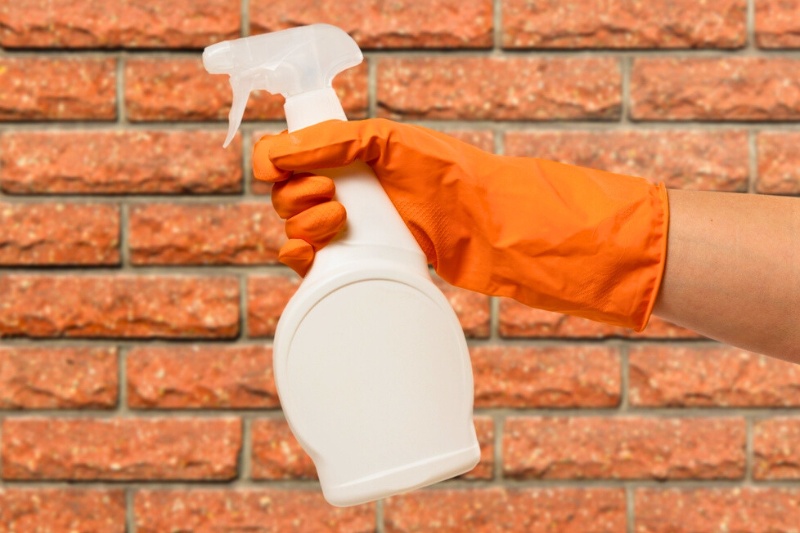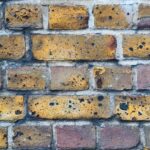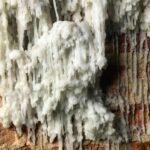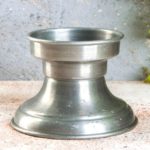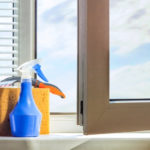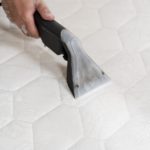Cleaning interior and exterior brick walls requires a delicate touch to preserve the beauty of the bricks while effectively removing stains.
Whether tackling the cosy ambience of an interior space or the weather-exposed exterior, understanding the right methods is crucial.
If you don’t know how to clean a brick wall, don’t worry. Here, we provide step-by-step instructions for cleaning both interior and exterior brick walls, addressing considerations for different types of bricks and stains. Keep reading for a complete low-down to get your brick walls looking as good as new.
Cleaning Interior Brick Walls
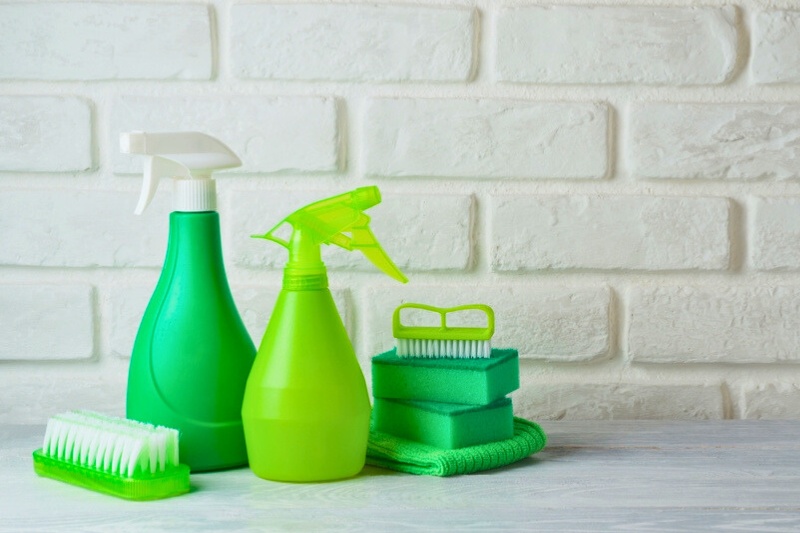
Cleaning an interior brick wall can be a bit tricky. It requires special care to avoid damaging the bricks or mortar.
Therefore, always check with the manufacturer’s recommendations for your specific type of brick if possible, as some may be more sensitive to certain cleaning agents before starting the steps below.
You also need to be careful to protect the surrounding are. Before you start, cover all adjacent surfaces to prevent damage from occurring—this includes furniture and flooring, which could be damaged by the cleaning solution.
You can use drop cloths or plastic sheets or move any nearby furniture to the other side of the room. Make sure all electrical outlets are also covered.
1. Dust and sweep
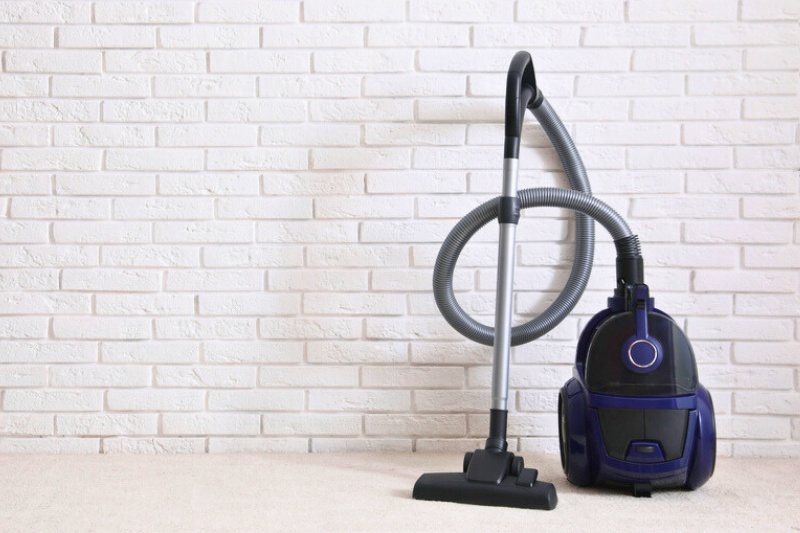
Begin by removing all loose dust and debris from the brick surface. This means you won’t be moving the loose dirt around the wall when you use a wet cleaning solution, making the brick easier to clean.
You have a few options for removing dust and dirt. You can either use a soft brush to gently sweep away any loose dirt or a handheld vacuum cleaner with a soft brush attachment.
Full-size vacuum cleaners also work effectively, but make sure you use the brush attachment to avoid scratching the brick surface.
2. Choose a cleaning solution
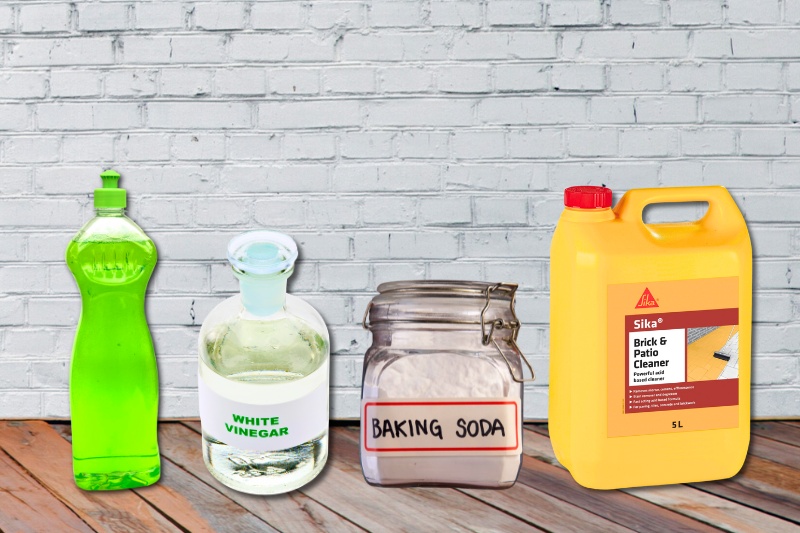
Several options for cleaning solutions can be used on brick walls, but the best option for you depends on the type of brick and the severity of the stains.
Some common options are listed below, increasing from more gentle to more potent cleaning solutions:
- Washing-up liquid: Mix a small amount of gentle washing-up liquid or mild dish soap with lukewarm water to create a soapy cleaning solution. This is a fantastic option for general cleaning as you can easily make large amounts, and it is gentle enough for all brick types.
- White vinegar: For a slightly stronger cleaning solution, dilute white vinegar with equal parts water and mix. The acidity from the vinegar can help cut through dirt and stains without causing damage. It is especially good at removing soot from brick.
- Bicarbonate of soda: Create a bicarbonate of soda cleaning paste by mixing baking soda with water to form a thick paste. If the brick covers a large area, this might not be the most practical solution, but it can be effectively used to spot-treat stains.
- Commercial brick cleaners: Heavy-duty cleaners specifically designed for cleaning bricks are also on the market.
You might want to choose a few cleaners from the above list to tackle different problems. For example, you might want to wash the entire brick wall using the washing-up liquid, then follow with white vinegar to tackle any remaining stains.
3. Apply the cleaning solution
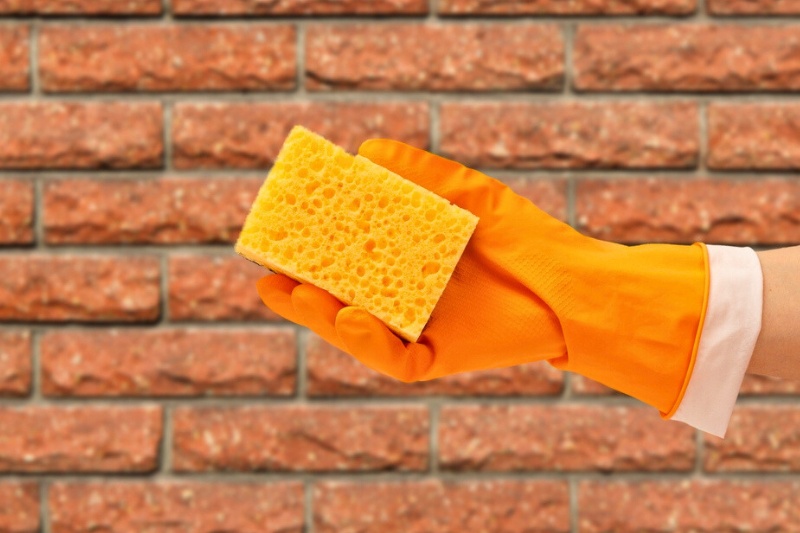
Before applying your chosen cleaning solution to the brick wall, test it in an inconspicuous area of the brick. This ensures that the cleaning agent doesn’t discolour or damage the surface.
You can treat the entire wall if the spot test comes back clear. Start by dipping a brush or sponge into the solution and scrub the brick surface.
Work in small sections to ensure thorough cleaning, moving from top to bottom. This prevents the dirty solution from dripping down onto the clean brick below.
The brush you use to apply the cleaning solution is also crucial:
- If you’re working with chimney brick, you can generally use a stiff-bristled brush.
- For painted brick walls, using a soft-bristled brush or sponge helps to protect the surface.
- Cleaning between the bricks or other hard-to-reach areas are best tackled using a toothbrush.
4. Rinse, dry, and repeat if necessary
After scrubbing, rinse the cleaned area with clean water using a sponge or a damp cloth. Ensure all cleaning solution residues are removed, as any remaining solution can damage the brick over time. This is especially true for stronger commercial cleaners.
After rinsing, allow the brick wall to air-dry completely. We suggest opening windows or using fans to improve ventilation and speed up drying. You can then inspect the brick and check you’re happy with the results. For stubborn stains, you may need to repeat the cleaning process.
Be patient and avoid using abrasive materials that could damage the brick surface. If your first attempt hasn’t worked, use one of the more potent cleaning solutions on our list and try again.
Cleaning Outside Brick Walls
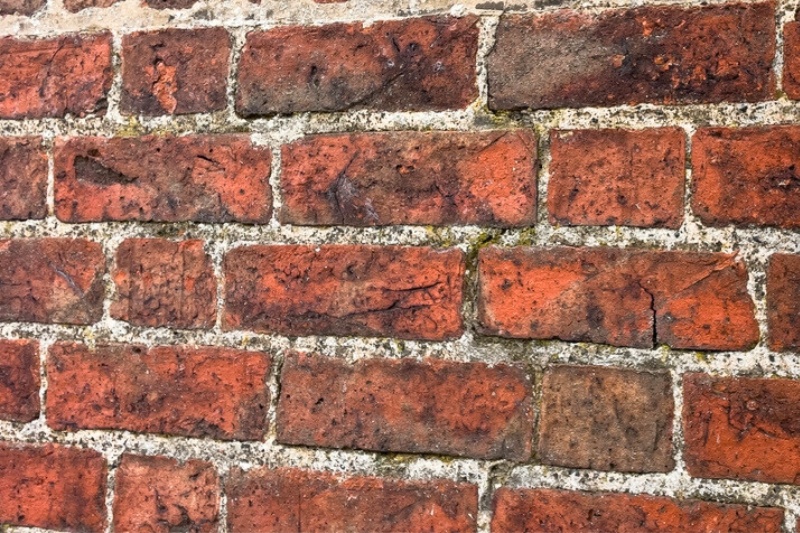
Cleaning an exterior brick wall involves similar principles to cleaning an interior brick wall, only with additional considerations due to exposure to the elements.
Below, you can find a step-by-step guide, but before you start, make sure you:
- Protect landscaping and nearby surfaces: Cover and protect plants, grass, and nearby surfaces from the cleaning solution, as some detergents can kill grass. You’ll also want to close all windows to prevent water from entering your home.
- Exercise safety precautions: Always wear appropriate safety gear (such as goggles and gloves) when using cleaning solutions and pressure washers. Follow all safety guidelines for the specific cleaning products you use.
- Inspect the wall: Examine the exterior brick wall for any structural issues or areas needing repair before cleaning. Repair any damaged or loose bricks, address any mortar issue first, and clean broken bricks and worsen the damage.
With these three things checked off, you can proceed with the steps below:
1. Dust and sweep

Begin by removing loose dirt, debris, and cobwebs from the surface of the brick. Make sure to reach the top corners of the wall to remove all pieces of dirt.
We recommend using a garden broom, as the long handle will help you reach these higher parts of the wall.
Brush horizontally along the wall rather than vertically down to prevent brushing all this dirt onto yourself. You can alternatively use a leaf blower to sweep away loose particles.
2. Dampen the wall
Before applying any cleaning solution, you need to dampen the brick. Bricks are porous materials, so wettening the brick will help prevent the cleaning solution from being absorbed too quickly. It also helps to dislodge more dirt from the wall.
The easiest way to dampen an exterior brick wall is to use a garden hose. You can turn on the jet stream or put your finger over the end of the nozzle to create a more powerful flow. If you have a pressure washer, you can alternatively use low pressure (500 to 1,000 PSI) to dampen the wall.
Note: Some older bricks cannot be pressure washed. If unsure, contact a professional. Safety equipment should also always be worn when using a pressure washer.
3. Choose a cleaning solution
Select an appropriate cleaning solution based on the type of stains and dirt on the exterior bricks. Your options include:
- Mild detergent: A pressure washer with mild detergent can effectively remove dirt and mild stains from strong brick types. If your wall isn’t suitable for pressure washing, you can scrub by hand using a soapy solution of water and detergent.
- Biodegradable brick cleaner: Commercial cleaners specifically designed for exterior brick surfaces are available. Never use brick cleaners intended for interior walls to clean outdoor brick, as it can cause damage to the environment.
- Bleach solution: Mould and mildew stains are common on exterior brick. To tackle these unsightly marks, mix one part of chlorine bleach with nine parts of warm water. This is approximately one tablespoon per gallon of water.
4. Apply cleaning solutions and rinse
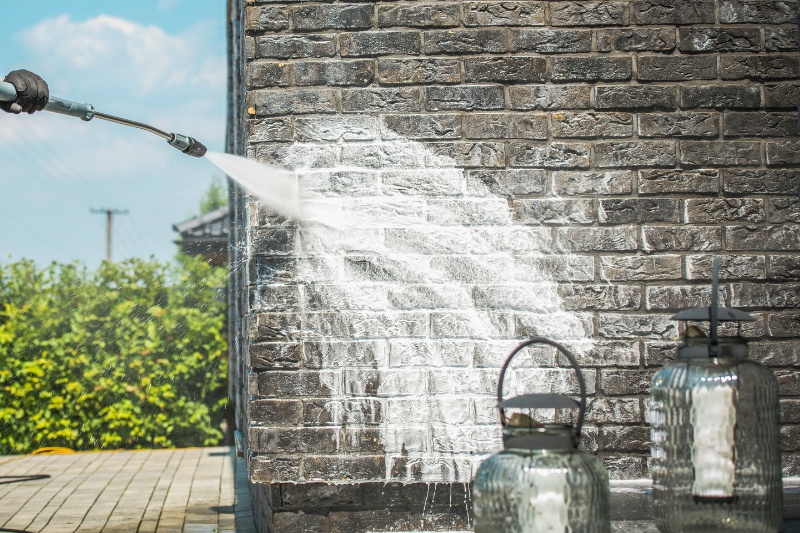
Test the cleaning solution on a small area of the brick to ensure it doesn’t cause damage, then apply it to the entire wall.
If using a pressure washer, keep the nozzle at a safe distance to avoid damaging the bricks. For other cleaning solutions, apply them with a brush, sponge, or low-pressure sprayer.
After applying the cleaning solution, rinse the wall thoroughly with a garden hose or pressure washer (if suitable for your brick type) to remove any residue. Ensure that the cleaning solution is completely washed away before inspecting the brick.
For any remaining stubborn stains, apply more cleaning solution directly to the marks and scrub using a soft-bristle brush.
Rinse again with warm water and repeat as many times as necessary. Once satisfied, you’ll also want to rinse any residue from other surfaces, such as the driveway or patio, using your garden hose.
How Often Should You Clean Brick Walls?
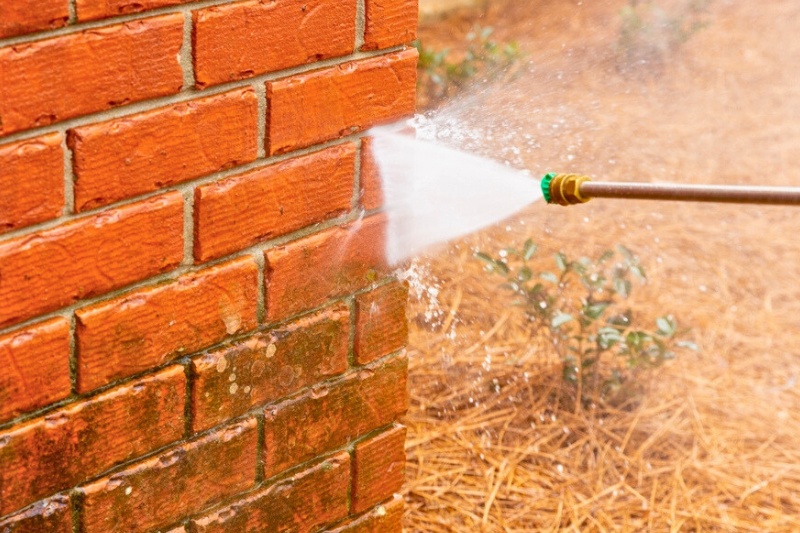
How often you should clean your brick walls depends on various factors, including the location, exposure to environmental elements, and the type of stains or dirt they accumulate. Here are some general guidelines:
- Annual cleaning: Performing a thorough cleaning once a year is a good starting point for cleaning both interior and exterior brick walls. This routine maintenance helps prevent the buildup of dirt, mildew, and other contaminants.
- Seasonal considerations: In areas with harsh weather conditions, it might be beneficial to clean exterior brick walls more frequently—especially after the winter or rainy seasons.when mould and mildew growth are more likely.
- Type of surroundings: Homes in rural or heavily wooded areas may accumulate more dirt, pollen, or organic matter on exterior brick walls, thus requiring more frequent cleaning. Brick walls close to roads or industrial areas may also need attention more often.
- Stain removal: If your brick walls are susceptible to staining, such as from nearby trees, rust from metal elements, or soot from the chimney, you may need to clean them more frequently to maintain their appearance.
- Sealed vs unsealed bricks: Sealed brick surfaces may require less frequent cleaning because the sealer helps protect against stains and contaminants. If you have unsealed brick walls, consider applying a sealant to make maintenance easier.

Hannah has a passion for cleaning. She worked her way around Australia by cleaning hostels in exchange for free accommodation and used her cleaning skills to bag a job as a chalet host for a luxury ski company in France.
